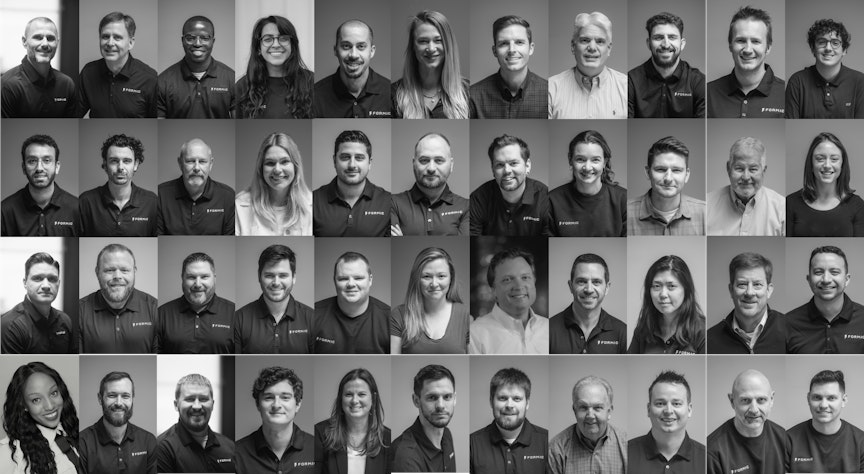Innovations in industrial automation are often talked about, but here are a few trends you might not have heard of…
1. Soft Robotics
Technology such as soft robotics is a direct solution to many of the limitations in traditional industrial robots. They are called soft robotics because they literally have features such as soft-touch grippers that consist of more elastic or flexible materials to closely simulate the touch of living organisms and their ability to adapt to their surroundings. These grippers offer a way for a robot to be more sensitive in dealing with product variability and unstructured environments.
Companies like iCobots and Soft Robotics attend to customers in the food manufacturing space that deal with delicate products. The customers appreciate the efficiency automation offers but require the soft robotics to maintain precision and quality. So, these companies utilize flexible robotic arms in addition to soft grippers to pick and place undefined shapes of varying weights.
Further advancements in this technology will eventually lead to more useful applications of automation.
2. Industrial Workplace Exoskeletons
Collaborative robots introduced the bold idea of workers and robots working together side by side. What if we could take that idea to the next level and have workers and robots work as one seamless individual, in other words, robots you could wear? Exoskeletons have been around in the medical field for rehabilitation, but companies like SuitX are engineering industrial workplace exoskeletons to help reduce fatigue and minimize the risk of injuries for all workers.
An exoskeleton can be used to support humans in lifting heavy objects, sitting in backless chairs for hours, and strengthening their grip on heavy tools. Manufacturers employing industrial exoskeletons have reported overall productivity gains and work quality improvements. The concept of wearable technology is truly advancing the potential collaboration between robots and humans.
To learn more about SuitX and see exactly how wearable/exoskeleton robots work, check out their 3-minute YouTube video: Wearable robots help human workers challenge the machines
3. Autonomous Mobile Robots (AMRs)
AGVs, autonomous guided robots, have been in operation since the 1950s and are still considered a very useful tool in a warehouse environment. AMRs, autonomous mobile robots, are the latest technology and are behind the development of self-driving/guiding vehicles. With more advanced functional software, AMRs are capable of path planning and self-navigation around obstacles, all of which AGVs lack. With advanced computer vision technology, they can swiftly move around a warehouse to identify, pick, and carry objects.
Demand for mobile robots is growing rapidly, as well as the options to choose from. There are companies like Locus Robotics, IAM Robotics, Amazon, 6 River Systems, and many others that have introduced their own product lines into the market. The rapid growth of this industry shows their importance and that companies recognize the potential benefits of this technology.
4. Robotics-as-a-service (RaaS)
“As-a-service” models are a rising trend. The concept is built upon the idea of bringing quick and easy solutions straight to the customer’s doorstep in the form of renting out the needed robotics. Robotics-as-a-service is a rapidly evolving business model that is alleviating the financing and engineering side of industrial equipment for customers.
While industrial robotic solutions have the potential to improve productivity and efficiency, a major drawback is often the overwhelming initial investment fees the technology requires. RaaS companies, like Formic, deliver a customized solution on a subscription basis with no upfront costs. Renting a robot from a vendor provides a financial advantage to end-users by minimizing capital expenditures and the intense pressures to realize a return on investment as quickly as possible. This is no different than why construction companies rent heavy equipment instead of buying it themselves, why car rental companies exist, and some home improvement stores offer tool rentals, so people don’t have to buy it themselves, saving them the cost of an expensive purchase.
Robotics-as-a-Service will help enable widespread adoption of automation amongst manufacturers of all shapes and sizes.
5. Self-healing robots
We are not too far away from robots that can detect “pain”. This research is an extension of the development of soft robotics. To help mitigate downtime and repairs, engineers have created functional materials that can form new bonds and undergo a healing process, without the need for human intervention. Robots equipped with this material can repair themselves in just seconds to a couple of days, depending on the severity of the injury.
Self-healing robots eliminate the need for maintenance and replacement. The potential benefits of this technology are undeniable, and it is already building a reputation in the food and beverage sector.
In less than a minute this video shows you exactly what one type of this technology can do: Self-healing robots that ‘feel pain’
6. Edge computing platforms
Knowledge is power. With the explosive growth of AI technology and IoT devices, the amount of knowledge and data available is unprecedented. Edge computing devices utilize sensors and actuators to cut through the complexity, offering an efficient and more comprehensive data analysis displayed on a user-friendly platform. With higher analytics capability, manufacturers can have deeper insights into the functionality and efficiency of their automation technology and machinery in real-time.
Amper is a great example of a company that provides easy access to machine OEE, overall equipment effectiveness, and downtime metrics to achieve complete visibility into a shop floor. Their clients now have the opportunity to ask strategic questions and make predictive decisions for their operational processes: how many people and robots should operate this production line to get the highest results? How is the cycle time affected by changing one of the production processes?
In order to extract the most value from the surplus of data available, manufacturers must adopt these edge devices.
7. IIoT Simulations
Simulation tools are a well-established and powerful methodology used to create virtual models of actual facilities. It includes anything and everything the user can imagine, from assembly lines to palletizing operations, and even human foot traffic. With limitless applicability, this tool is most useful when a user needs to evaluate or optimize a specific problem on their shop floor. This greatly reduces investment costs and prevents future risks, thereby saving time and resources. For example, if a manufacturer is automating with AMRs for the first time, the engineering team can test and optimize path navigation within a controlled, repeatable environment.
With a macro-level understanding of an entire process, simulations are an inexpensive, risk-free method for identifying manufacturing bottlenecks and opportunities for cost savings. Now, companies like Octopuz, are building user-friendly simulation software that is easier, faster, and cheaper to use. Thus, simulation solutions are a critical trend in the industry.


